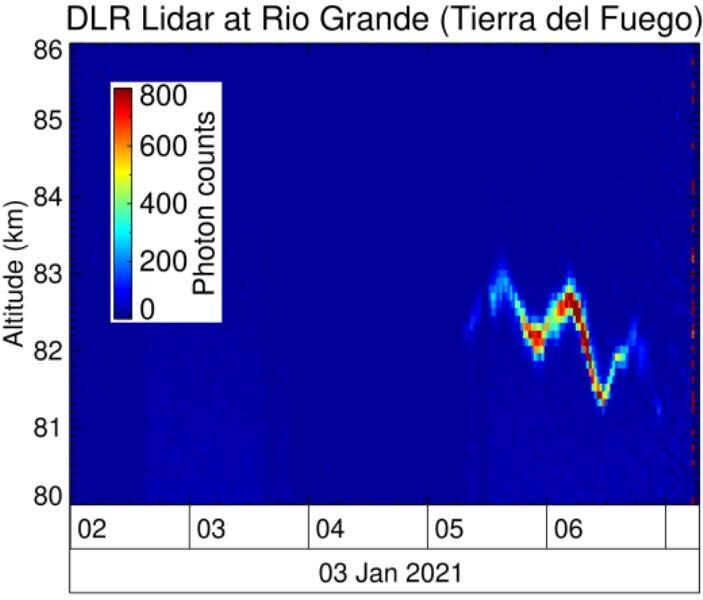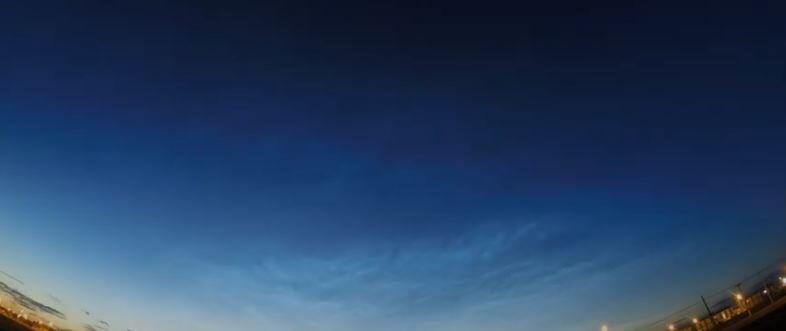"This is a very rare event," reports Gerd Baumgarten of Germany's Leibniz-Institute of Atmospheric Physics, whose automated cameras caught the clouds rippling over Rio Grande, Argentina (53.8S) on Jan. 3rd:
What's so strange about that? At this time of year, noctilucent clouds are supposed to be confined to Antarctic latitudes--not Argentina. In the whole history of atmospheric research, NLCs have been sighted at mid-southern latitudes only a handful of times.
"Personally, I am thrilled to see NLCs in Argentina, as I had not expected them to occur so far north," says Natalie Kaifler of the German Aerospace Center (DLR), who operates a lidar (laser radar) alongside one of Baumgarten's cameras.
Lidar echoes captured during the display confirm that these are genuine NLCs floating more than 80 km above Earth's surface:

This season has been unusual. The normal onset of NLCs in the south has been delayed for more than a month as strange weather patterns played out over Antarctica. Now, suddenly, they're back, and showing up in unexpected places.
Baumgarten has set up two cameras in southern Argentina to catch unexpected NLCs. "If it happens again," he says, "we'll let you know." Stay tuned!




Comment: Another unusual sighting occurred in our changing atmosphere this week: Novel atmosphere phenomenon 'STEVE' makes ANOTHER appearance over Finland
See also: